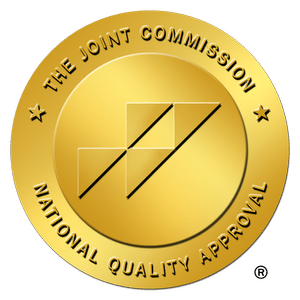Cognitive Processing Therapy (CPT) is a specialized type of cognitive-behavioral therapy particularly effective in treating Post-Traumatic Stress Disorder (PTSD) and related conditions.
Developed in the 1980s by psychologists Drs. Patricia Resick and Monica Schnicke, CPT is grounded in the understanding that traumatic events can lead to a shattering of one’s core beliefs, resulting in significant emotional and psychological distress.
At the heart of CPT is the belief that trauma can distort one’s thinking, leading to a negative interpretation of the event and oneself.
It focuses on helping individuals confront and challenge these distorted beliefs through a structured process.
This therapy typically spans 12 sessions, where patients learn to identify and challenge negative thoughts (known as ‘stuck points’), ultimately reshaping their understanding of the trauma and reducing its ongoing impact.
CPT is particularly effective because it empowers individuals to become their own therapists.
Through tools like thought records and Socratic questioning, patients learn to analyze and modify their thoughts independently.
This emphasis on skill-building is critical for long-term management and recovery from trauma-related disorders.
Transitioning into the broader context, mental health is a crucial aspect of overall well-being, affecting how individuals think, feel, and act.
It also influences how one handles stress, relates to others, and makes choices.

Mental Health is Vital
Mental health is vital at every stage of life, from childhood and adolescence through adulthood.
Despite its importance, mental health often remains overlooked or stigmatized, making accessible and effective treatments like CPT vital. Consequently, the World Health Organization (WHO) emphasizes that mental health is not merely the absence of mental disorders or disabilities but a state of well-being where individuals realize their abilities, cope with normal stresses of life, work productively, and contribute to their communities.
The significance of mental health lies in its direct impact on individuals’ quality of life, relationships, and ability to contribute meaningfully to society.
In recent years, the importance of mental health has gained more recognition, partly due to increasing awareness and partly due to the rising prevalence of mental health conditions.
According to the National Institute of Mental Health, nearly one in five U.S. adults live with a mental illness.
Conditions such as depression, anxiety disorders, PTSD, and others significantly impact individuals’ lives, making effective treatments like CPT not just beneficial but essential.

Goal of This Article
The purpose of this article is to explore the role of Cognitive Processing Therapy in mental health treatment.
By delving into what CPT is, its mechanisms, and its effectiveness, the article aims to illuminate how this therapy modality stands as a ray of hope for many suffering from the aftereffects of trauma.
It also seeks to demystify CPT, making it more accessible to those who might benefit from it, and to encourage mental health professionals to consider incorporating it into their therapeutic repertoire.
Understanding CPT’s role in mental health treatment is particularly pertinent in a world where traumatic experiences are unfortunately common.
From veterans coping with combat-related PTSD to individuals dealing with the aftermath of sexual assault or other traumatic events, the need for effective, evidence-based treatment is clear.
CPT offers a structured, focused approach that has been empirically validated in numerous studies, demonstrating its efficacy in reducing symptoms of PTSD and improving overall quality of life.
Cognitive Processing Therapy is more than just a treatment modality; it represents a significant advancement in the field of mental health, offering hope and healing to those affected by trauma.
As we continue to explore its role in mental health treatment, it’s crucial to recognize the broader implications of mental health care and the need for accessible, effective therapies like CPT.
This article aims to contribute to that understanding, shedding light on a therapy that has the potential to transform lives.

The Fundamentals of Cognitive Processing Therapy
Cognitive Processing Therapy (CPT) is a form of cognitive-behavioral therapy that has been specifically developed to treat symptoms of Post-Traumatic Stress Disorder (PTSD) and related psychological conditions.
This section highlights the historical background of CPT, its core principles, and the mechanisms through which it facilitates healing and recovery for trauma survivors.
A. Historical Background of CPT
CPT was developed in the late 1980s by psychologists Dr. Patricia Resick and Monica Schnicke as a response to the growing need for effective treatment modalities for PTSD.
This was a period marked by increased awareness of the impact of traumatic events, notably among veterans returning from wars and victims of sexual assault.
Resick and Schnicke’s pioneering work was grounded in the understanding that PTSD and related disorders often arise from a disruption in the cognitive processing of traumatic events.
They theorized that the key to treating these conditions lay in addressing these cognitive distortions and helping individuals reframe their understanding of the trauma.
The development of CPT was informed by earlier psychological theories and practices, particularly those relating to cognitive-behavioral therapy (CBT).
CPT integrates the principles of CBT with specific techniques designed to target trauma-related cognitive distortions.
Over the years, CPT has evolved, integrating feedback from clinical trials and practical applications, making it one of the most robust and evidence-based treatments available for PTSD today.
B. Core Principles of CPT
The effectiveness of CPT lies in its structured approach, centered around two core principles: cognitive restructuring and processing trauma.
These principles work in tandem to help individuals understand and change how they think about their trauma and its aftermath, leading to a reduction in PTSD symptoms and related distress.
1. Cognitive Restructuring
Cognitive restructuring is a fundamental element of CPT. It involves identifying, challenging, and modifying unhelpful and distorted thoughts related to the trauma.
Individuals undergoing CPT learn to recognize ‘stuck points’, which are rigid, inaccurate thoughts contributing to their distress.
These might include beliefs like “I am completely to blame for what happened” or “The world is entirely dangerous.”
For example, a veteran might have a stuck point such as, “If I had been more alert, I could have prevented the attack,” leading to feelings of guilt and helplessness.
Through cognitive restructuring, the therapist helps the veteran examine the evidence for and against this belief, encouraging a more balanced perspective.
They might explore questions like, “Is it possible to predict and prevent every attack in a war zone?” or “What responsibilities did others involved in the situation have?”
This process helps the individual develop more accurate and less distressing beliefs about the trauma and themselves.
2. Processing Trauma
Processing trauma in CPT involves more than just talking about the traumatic event.
It’s an active engagement with the thoughts and feelings associated with the trauma.
Patients are encouraged to articulate their thoughts about the trauma and its impact on their lives, beliefs, and self-perception.
This process often involves writing about the traumatic event, which helps to organize and clarify thoughts and feelings.
An example of this process can be seen in a survivor of a car accident who believes, “I can never feel safe again.”
Through CPT, this individual is guided to recount the event, identify emotions and thoughts linked to the accident, and then critically examine these thoughts.
This might lead to a realization that while the accident was terrifying and had a significant impact, it doesn’t necessarily dictate the entirety of their future safety or experiences.
By processing these thoughts and emotions in a structured way, the survivor begins to understand that their belief, although understandable, is a generalization stemming from the trauma.
Through guided questioning and reflection, they might come to recognize that safety is a complex concept and not entirely black-and-white.
They may acknowledge that while the accident was a specific event with specific causes, it does not mean all future situations will result in the same outcome.
This cognitive shift is crucial in CPT. It allows the individual to differentiate between the traumatic event and other life experiences.
The therapist might encourage the survivor to look at evidence contradicting their belief, such as times when they were safe in a car or measures they can take to enhance safety.
By examining these instances, the individual can begin to challenge and reframe their initial belief, leading to a more nuanced understanding of safety and risk.
Moreover, the therapist may work with the survivor to develop coping strategies for when they feel unsafe.
These might include relaxation techniques, grounding exercises, or rational self-talk.
These strategies provide practical tools for managing anxiety and fear, further helping to break the association between the trauma and a perpetual state of danger.
In essence, through CPT, the car accident survivor learns to reinterpret their traumatic experience, reducing its emotional hold and allowing for a more balanced view of the world.
This cognitive and emotional processing is at the core of CPT’s effectiveness, helping individuals reclaim a sense of control and resilience in their lives.

The CPT Process: An Overview
Cognitive Processing Therapy (CPT) is a sophisticated and effective treatment modality for Post-Traumatic Stress Disorder (PTSD) and related conditions.
1. Assessment and Preparation
The initial phase of CPT, assessment and preparation, is critical as it sets the foundation for the entire therapeutic process.
This phase typically involves a thorough evaluation of the patient’s symptoms, history of trauma, and current cognitive and emotional state.
The goal is to develop a clear understanding of the individual’s specific experiences and how they have impacted their thoughts, emotions, and behaviors.
During the assessment, the therapist will often use standardized tools such as the PTSD Checklist (PCL) or the Clinician-Administered PTSD Scale (CAPS) to gauge the severity of the symptoms.
This process helps in establishing a baseline against which the progress of therapy can be measured.
Preparation also involves educating the patient about PTSD and CPT. The therapist explains how trauma can affect thoughts and beliefs, and how CPT works to address these.
This education component is vital as it helps patients understand the rationale behind the therapy and prepares them for the work ahead.
It also serves to normalize their experiences and reduce any stigma or shame they may feel about their symptoms.
Another critical aspect of this phase is building a therapeutic alliance.
Establishing trust and rapport is essential for the patient to feel safe and supported throughout the therapy process.
The therapist often spends time discussing confidentiality, setting realistic expectations, and addressing any concerns or questions the patient might have.
2. Cognitive Reframing and Challenging Beliefs
The core of CPT lies in the cognitive reframing and challenging beliefs phase.
This stage focuses on identifying and modifying the distorted beliefs and thoughts (known as ‘stuck points’) that maintain PTSD symptoms.
Stuck points often revolve around themes of safety, trust, power/control, esteem, and intimacy.
Clients are taught to recognize these stuck points and the ways in which they influence emotions and behaviors.
For instance, a client who survived a violent assault might believe, “I can never trust anyone again.”
Through cognitive reframing, the therapist helps the client explore this belief, examining its accuracy and helpfulness.
One key tool used in this phase is the CPT thought record, a worksheet where clients record specific traumatic events, their thoughts about those events, and the resulting emotions.
This record helps clients see the connection between their thoughts and feelings and serves as a basis for challenging their stuck points.
Challenging beliefs in CPT involves examining the evidence for and against these stuck points.
Clients learn to ask themselves questions like, “Is there evidence that supports this belief? Is there evidence that contradicts it?” and “Are there alternative explanations?”
This process helps clients develop more balanced and accurate thoughts about their trauma and themselves.
Another essential component of this phase is learning to understand and challenge common cognitive distortions, such as overgeneralization, catastrophizing, and all-or-nothing thinking.
By recognizing these patterns, clients can begin to see how their thinking contributes to their distress.
3. Integration and Conclusion
The final phase of CPT is integration and conclusion. This stage is about consolidating the gains made during therapy and preparing the client for the end of formal treatment.
Clients continue to practice the skills learned in therapy, applying them to various aspects of their lives.
An important aspect of this phase is the writing of an impact statement. This exercise allows clients to articulate the impact of their trauma on their beliefs about themselves, others, and the world.
It serves as a way to summarize their learning and growth throughout therapy and to solidify their new understanding of the traumatic event.
Integration also involves discussing relapse prevention and future planning.
Clients learn to anticipate potential challenges and stressors and plan how they will use their CPT skills to address them.
This planning helps clients feel prepared to handle difficult situations and emotions that may arise after therapy ends.
The conclusion of CPT is marked by a review of the progress made and a celebration of the client’s work.
It’s an opportunity to reflect on the changes in beliefs, emotions, and behaviors that have occurred and to acknowledge the client’s resilience and strength.
Cognitive Processing Therapy is a highly structured, time-limited therapy that has demonstrated effectiveness in treating PTSD and related disorders.
Through its phases of assessment and preparation, cognitive reframing and challenging beliefs, and integration and conclusion, CPT provides clients with tools to understand and change how they think about their trauma.
This process leads to a reduction in PTSD symptoms and an improvement in overall functioning.
The skills and insights gained in CPT extend well beyond the therapy sessions, offering clients a path to lasting change and recovery.

Cognitive Processing Therapy in the Context of Mental Health Disorders
Cognitive Processing Therapy (CPT) is a form of cognitive-behavioral therapy that has been particularly effective in treating a range of mental health disorders, with a primary focus on Post-Traumatic Stress Disorder (PTSD). Post-Traumatic Stress Disorder (PTSD)
1. Prevalence and Impact
PTSD is a mental health condition triggered by experiencing or witnessing a terrifying event.
Symptoms may include flashbacks, nightmares, severe anxiety, and uncontrollable thoughts about the event.
The prevalence of PTSD varies, but it is a significant public health issue globally.
According to the American Psychiatric Association report, about 3.5% of U.S. adults suffer from PTSD each year, and an estimated 1 in 11 people will be diagnosed with PTSD in their lifetime.
The impact of PTSD extends beyond the individual to affect families, communities, and societies.
Individuals with PTSD may experience difficulties in their personal relationships, challenges in maintaining employment, and an increased risk of other mental health disorders, such as depression and anxiety.
The societal impact includes increased healthcare costs and reduced productivity.
2. CPT’s Effectiveness in Treating PTSD
PTSD is a mental health condition that can develop after a person has experienced or witnessed a traumatic event.
CPT is highly effective in treating PTSD, which has been demonstrated through numerous research studies and clinical trials.
The primary mechanism of CPT in treating PTSD involves helping individuals reframe and rethink the traumatic experience, challenging and altering the distressing patterns of thought that contribute to the symptoms of PTSD.
For instance, a person who has survived a natural disaster may constantly relive the event and feel overwhelming guilt or fear.
Through CPT, they learn to challenge thoughts like, “I should have done more to save others,” or “The world is completely unsafe,” which are common in PTSD sufferers.
In CPT, patients are guided to scrutinize these beliefs, evaluating their accuracy and impact.
They learn to replace irrational and harmful thought patterns with more balanced and realistic ones.
This cognitive restructuring leads to a significant reduction in the symptoms of PTSD, including flashbacks, nightmares, and severe anxiety.
A notable example of CPT’s success in treating PTSD can be seen in military veterans. Many veterans struggle with PTSD due to traumatic experiences during service.
Studies have shown that veterans who undergo CPT experience substantial reductions in PTSD symptoms, often regaining the ability to function normally in their daily lives.
Other Mental Health Conditions Addressed by CPT
1. Anxiety Disorders
Anxiety disorders involve more than temporary worry or fear.
For people with an anxiety disorder, the anxiety does not go away and can worsen over time.
CPT has been adapted to treat certain types of anxiety disorders, especially when the anxiety stems from distorted thinking patterns related to past traumatic events.
For instance, a person with Generalized Anxiety Disorder (GAD) might excessively worry about a range of everyday issues.
If their anxiety is linked to a traumatic event, such as an abusive relationship in the past, CPT can help them address and reframe the thoughts contributing to their anxiety.
By working through these traumatic experiences and their associated thoughts, patients often find significant relief from their anxiety symptoms.
2. Depression
Depression is a common and serious medical illness that negatively affects how you feel, the way you think, and how you act.
CPT’s approach to addressing negative thought patterns makes it effective in treating depression, particularly when linked to past trauma.
For example, a person who experienced childhood neglect might harbor deep-seated beliefs of worthlessness or hopelessness.
Through CPT, they can confront these beliefs, understanding their roots and gradually adopting more positive and affirming thoughts.
This shift in thinking can lead to a decrease in depressive symptoms, as the individual learns to view themselves and their experiences in a more balanced and compassionate light.
3. Adjustment Disorders
Adjustment disorders are caused by a significant life change or stressful event.
They are characterized by an emotional or behavioral reaction that seems out of proportion to the event.
CPT can be effective in these cases by aiding individuals in understanding and processing their reactions to stressors.
Consider an individual who has experienced a sudden job loss and is struggling to cope with this change.
They may develop symptoms of an adjustment disorder, such as depression or anxiety.
CPT can help by allowing them to explore their thoughts about the job loss, challenge any negative beliefs (like “I will never be successful again”), and develop healthier coping mechanisms.
Summary
Cognitive Processing Therapy is a versatile and powerful tool in the treatment of various mental health disorders, particularly those rooted in or exacerbated by traumatic experiences and negative thought patterns.
Its structured approach allows individuals to confront and restructure their thoughts, leading to significant improvements in their mental health.
For PTSD, CPT has been a game-changer, offering many sufferers a path to recovery that was previously unavailable.
Its application in treating anxiety disorders, depression, and adjustment disorders further underscores its utility in addressing a broad spectrum of mental health challenges.
By enabling individuals to modify the way they process and think about their experiences, CPT provides more than just symptom relief; it offers a route to lasting change and improved overall well-being.
As mental health treatment continues to evolve, CPT’s role in providing effective, evidence-based care for a variety of mental health conditions remains invaluable.

Comparative Analysis of CPT with Other Therapeutic Approaches
A. Cognitive Processing Therapy vs. Cognitive Behavioral Therapy (CBT)
While CPT is a subset of CBT, there are distinct differences between the two approaches.
Both therapies are grounded in the principle that psychological distress is largely a result of problematic thought patterns.
However, CPT is specifically tailored for trauma-related disorders, particularly focusing on how traumatic experiences are processed and understood.
Focus: CBT is a broader therapy, addressing a wide range of mental health issues including anxiety, depression, and phobias.
It involves identifying and challenging negative thought patterns and beliefs to bring about a change in behavior and mood.
CPT, on the other hand, is more focused on dealing with the thoughts and feelings resulting from trauma, specifically targeting ‘stuck points’ or problematic beliefs that hinder recovery from trauma.
Techniques: CBT employs a variety of techniques like relaxation, mindfulness, and problem-solving.
CPT specifically uses writing assignments and Socratic questioning to help patients explore and reframe trauma-related beliefs.
Duration and Structure: Both therapies are time-limited and structured, but CPT typically follows a more consistent and specific protocol tailored for PTSD, usually spanning 12 sessions.
For instance, a person with PTSD might undergo CPT to specifically address and reprocess traumatic memories, while someone with generalized anxiety might benefit from the broader scope of CBT techniques.
B. CPT vs. Prolonged Exposure Therapy
Prolonged Exposure (PE) Therapy is another treatment for PTSD that differs significantly from CPT in its approach and methodology.
Approach: PE is based on the theory of extinction learning in classical conditioning. It involves repeated, prolonged exposure to trauma-related stimuli with the goal of reducing the emotional response to these stimuli.
In contrast, CPT does not necessarily require patients to relive or be exposed to the traumatic memories.
Instead, it focuses on changing the way a person perceives and processes the trauma.
Techniques: PE involves techniques like in vivo exposure (directly facing feared situations in real life) and imaginal exposure (mentally revisiting the traumatic event).
CPT, conversely, uses cognitive techniques to help individuals identify and challenge their trauma-related thoughts.
Suitability and Preferences: Some patients may prefer CPT over PE because it does not require them to directly confront traumatic memories, which can be distressing.
Others might find the direct approach of PE more effective.
For example, a war veteran might opt for PE to directly confront and diminish the distress of combat memories, whereas another might choose CPT to change the way they think about and interpret their war experiences.
C. CPT in Conjunction with Medication
The combination of psychotherapy and medication is a common approach in treating various mental health disorders.
CPT, like other psychotherapies, can be effectively combined with medication, particularly in complex or severe cases of PTSD or when comorbid conditions like depression or anxiety are present.
Synergistic Effects: Medications such as selective serotonin reuptake inhibitors (SSRIs) are often prescribed for PTSD to manage symptoms like anxiety, depression, or insomnia.
Combining these medications with CPT can enhance overall treatment effectiveness.
Medication can reduce symptoms to a manageable level, allowing the individual to fully engage in CPT.
Treatment Individualization: The decision to combine CPT with medication depends on individual factors like severity of symptoms, personal preferences, and history of response to treatments.
For some, medication may be a temporary aid used at the beginning of therapy, while for others, it might be a long-term component of managing their PTSD.
Holistic Approach: This combination acknowledges the complex biological and psychological facets of PTSD.
For example, a person with severe PTSD and major depressive disorder might find that medication helps stabilize their mood, making them better able to engage in the challenging cognitive work of CPT.
Summary
Cognitive Processing Therapy, while rooted in the principles of cognitive-behavioral therapy, offers a distinct approach tailored specifically for trauma-related disorders.
Its comparative analysis with CBT highlights its specialized focus and techniques for trauma.
When contrasted with Prolonged Exposure Therapy, the differences in approach to trauma processing become evident, offering individuals options based on their preferences and needs.
The combination of CPT with medication represents a holistic approach, addressing both the psychological and biological aspects of PTSD.
Each therapeutic approach has its unique strengths, and the choice of treatment should be tailored to the individual needs and circumstances of the patient.

Challenges and Limitations of CPT
Cognitive Processing Therapy (CPT) has emerged as a powerful tool in treating Post-Traumatic Stress Disorder (PTSD) and other trauma-related disorders.
However, like any therapeutic approach, it has its challenges and limitations.
A. Potential Barriers in CPT
The efficacy of CPT can be influenced by several factors, which may act as barriers to its successful implementation:
Emotional Intensity: CPT requires patients to confront and process traumatic memories, which can be emotionally taxing.
Some individuals may find this aspect of therapy overwhelming, leading to increased stress or a temporary worsening of symptoms.
Cognitive Overload: The cognitive aspect of CPT, which involves challenging and reframing entrenched beliefs, can be intellectually demanding.
Patients with cognitive impairments, severe mental health issues, or limited educational background might find these tasks challenging.
Therapist Expertise: The success of CPT heavily relies on the therapist’s skill in guiding the patient through the process of cognitive restructuring. Inexperienced therapists might struggle with adequately supporting patients through this complex process.
Cultural and Language Barriers: CPT involves nuanced understanding of thoughts and emotions, which can be hindered by cultural differences or language barriers between the therapist and patient.
Homework Compliance: CPT requires patients to complete regular homework assignments. Non-compliance with these assignments can significantly reduce the therapy’s effectiveness.
B. Limitations in Certain Patient Populations
CPT, while broadly effective, may not be suitable for all patient populations due to various reasons:
Severe Mental Health Conditions: Patients with severe mental health issues such as psychosis or severe dissociative disorders might not be suitable for CPT.
These conditions can impair the patient’s ability to engage in the therapy effectively.
Complex Trauma: Individuals with a history of complex trauma (e.g., prolonged childhood abuse) might find CPT less effective.
These cases often require a more prolonged and multifaceted treatment approach.
Children and Adolescents: CPT is primarily designed for adults. Children and adolescents might require a modified approach that is appropriate to their developmental stage.
Substance Abuse: Patients with active substance abuse issues might struggle with the structure and demands of CPT.
Substance abuse can interfere with the cognitive processes central to CPT.
C. Addressing Misconceptions and Resistance
Misconceptions about CPT and resistance from patients can further complicate the therapy process. Addressing these issues is vital for successful outcomes:
Educating Patients: It is crucial to educate patients about the nature and goals of CPT. Understanding the rationale behind confronting traumatic memories and challenging beliefs can help reduce resistance.
Building a Therapeutic Alliance: Establishing a strong therapeutic relationship can help in mitigating resistance.
Trust and rapport between the therapist and patient can make it easier to navigate the challenging aspects of CPT.
Addressing Fears and Concerns: Patients may have fears about the intensity of confronting trauma or about changing long-held beliefs.
Addressing these concerns directly can help in reducing resistance.
Modifying the Approach: Flexibility in the application of CPT can be beneficial. For some patients, a slower pace or additional support mechanisms might be necessary.
Dealing with Cultural Considerations: Understanding and respecting cultural differences is crucial.
Therapists should be sensitive to cultural nuances in how trauma and mental health are perceived and discussed.
Managing Expectations: It’s important to set realistic expectations about the therapy process and outcomes.
Patients should understand that progress can be gradual and that setbacks are a normal part of recovery.
While CPT is a highly effective treatment for PTSD and related disorders, acknowledging and addressing its challenges and limitations is crucial.
By recognizing potential barriers, understanding the limitations in certain patient populations, and effectively addressing misconceptions and resistance, therapists can maximize the efficacy of CPT.
Tailoring the therapy to individual needs, providing adequate support, and maintaining a flexible approach are key to overcoming these challenges.
As the field of psychotherapy continues to evolve, so too will the strategies to enhance the effectiveness of therapies like CPT, ensuring they remain valuable tools in the treatment of trauma-related disorders.

Case Studies and Clinical Evidence
Cognitive Processing Therapy (CPT) has demonstrated significant success and clinical efficacy in various case studies and research findings, particularly for treating Post-Traumatic Stress Disorder (PTSD) and related conditions.
A. Success stories: Real-life impacts of CPT
One noteworthy case involved an older woman veteran suffering from PTSD secondary to military sexual trauma.
Through CPT, she experienced a notable decrease in PTSD symptoms, showcasing CPT’s effectiveness even without major modifications for older adults.
This case emphasizes the adaptability of CPT across different age groups and the types of trauma experienced.
Another remarkable case is that of a combat veteran who received an intensive version of CPT, delivered twice per day over a single week (known as CPT-5).
Post-treatment, the veteran reported substantial decreases in PTSD and depression symptom severity, along with a reduction in guilt cognitions, a key mechanism in effective treatment.
These effects persisted for six weeks post-treatment, indicating the potential of CPT-5 as a clinically effective and efficient therapy model.
B. Review of clinical trials and research findings
Clinical trials and research on CPT have consistently shown its effectiveness in reducing PTSD symptoms.
The focused approach of CPT, particularly in targeting trauma-related cognitions, is a significant factor in its success.
The evidence from these studies underscores CPT’s role as a first-line treatment for PTSD, offering significant improvements in mental health for individuals who have experienced traumatic events.
C. Long-term efficacy of CPT
The long-term efficacy of CPT is a crucial aspect of its overall effectiveness.
Studies indicate that the benefits of CPT, such as reduced symptoms of PTSD and depression, often persist well beyond the end of therapy.
This enduring impact highlights CPT’s role not only in immediate symptom relief but also in fostering long-lasting mental health improvements.
The ability of CPT to equip patients with coping strategies and cognitive tools contributes to the maintenance of these treatment gains over time.
CPT stands as a robust and effective therapeutic approach, with a broad spectrum of applicability across different patient demographics and trauma types.
Its success stories and clinical evidence reinforce its value in the field of psychotherapy, particularly in treating trauma-related disorders like PTSD.
The long-term efficacy of CPT further accentuates its role as a vital component in the treatment and management of mental health conditions arising from traumatic experiences

Implementing CPT in Clinical Practice
Implementing Cognitive Processing Therapy (CPT) in clinical practice requires a multifaceted approach, involving the training and certification of therapists, integration in diverse healthcare settings, and the deployment of effective patient engagement strategies.
A. Training and Certification for Therapists
The effectiveness of CPT largely hinges on the skill and understanding of the therapist. Therefore, appropriate training and certification are crucial.
Training Programs: Training typically involves comprehensive coursework that covers the theory behind CPT, its application, and nuances in treating different types of trauma.
This training is often provided through workshops, online courses, and supervised clinical practice.
Certification Process: After completing training, therapists usually undergo a certification process.
This process may include demonstrating proficiency in CPT techniques, submitting recorded therapy sessions for review, and passing a certification exam.
Ongoing Education: The field of trauma therapy is continually evolving. Therefore, therapists should engage in ongoing education and training to stay updated with the latest research and best practices in CPT.
Supervision and Consultation: Regular supervision and consultation with experienced CPT practitioners are crucial, especially for therapists new to the method.
This support helps in refining their skills and addressing challenges encountered in clinical practice.
B. Integrating CPT in Diverse Healthcare Settings
CPT has been implemented in various healthcare settings, from private practice to hospitals and veterans’ healthcare systems.
Each setting presents unique challenges and opportunities for integration.
Adaptation to Settings: Adapting CPT to different settings involves considering factors like patient demographics, available resources, and institutional policies.
For example, in a military hospital, therapists might need to tailor their approach to address combat-related trauma specifically.
Interdisciplinary Collaboration: Effective implementation of CPT often requires collaboration with other healthcare professionals, including psychiatrists, primary care physicians, and social workers.
This collaboration ensures a comprehensive approach to patient care.
Program Development: Developing specialized CPT programs or integrating CPT into existing treatment programs can enhance its accessibility and effectiveness.
This might involve training staff, establishing therapy protocols, and setting up systems for patient referral and follow-up.
Cultural Sensitivity: It’s essential to adapt CPT to be culturally sensitive and relevant, especially in diverse or multicultural settings.
Understanding cultural variations in the perception and expression of trauma is key.
C. Patient Engagement Strategies
Engaging patients effectively is a critical component of successful CPT implementation. This involves initial engagement, maintaining engagement throughout therapy, and follow-up.
Initial Engagement: The first step is educating patients about CPT and what it involves.
Clear communication about the therapy’s benefits, expectations, and the patient’s role is crucial. Building trust and rapport from the outset is also vital.
Maintaining Engagement: CPT can be challenging for patients, especially when confronting traumatic memories.
Strategies to maintain engagement include setting manageable goals, regular monitoring of progress, and providing encouragement and support.
Managing Resistance: Resistance to therapy can arise, often due to the discomfort of dealing with traumatic experiences.
Addressing resistance involves understanding its source (e.g., fear, lack of trust, cultural factors) and adapting the therapy approach accordingly.
Follow-Up and Support: Providing follow-up support after the completion of therapy can help in maintaining the gains achieved.
This might include periodic check-ins, booster sessions, or referrals to support groups.
Implementing CPT in clinical practice is a comprehensive process that extends beyond the basic training of therapists.
It requires thoughtful integration into various healthcare settings, considering the unique needs and challenges of each.
Equally important are the strategies employed to engage patients effectively, acknowledging their individual journeys and the complexities of trauma therapy.
Through meticulous training, thoughtful integration, and patient-centered engagement, CPT can be a profoundly effective tool in treating trauma and enhancing the overall well-being of patients.

Future Directions and Research in CPT
A. Emerging Trends in CPT Research
Current research in CPT is expanding its scope and deepening our understanding of its efficacy and applicability. Several key trends are emerging:
Diverse Populations: There’s increasing research on the use of CPT among diverse populations, including different cultural, ethnic, and age groups.
This research aims to adapt and tailor CPT to be more culturally sensitive and effective across a broader spectrum of patients.
Complex Trauma: New studies are exploring the effectiveness of CPT for individuals with complex trauma histories, such as prolonged childhood abuse.
These studies are crucial as they challenge CPT to address more intricate and deep-rooted trauma patterns.
Comorbid Conditions: Another area of focus is the application of CPT in treating PTSD in conjunction with comorbid conditions like substance abuse, depression, and anxiety disorders.
This research is vital for developing integrated treatment approaches for more complex clinical profiles.
Mechanisms of Change: Understanding the underlying mechanisms through which CPT effects change remains a key area of research.
Studies are increasingly focusing on cognitive, emotional, and neurological changes associated with CPT to refine the therapy further.
B. Innovations in therapy delivery (e.g., telehealth)
Innovations in the delivery of CPT are making the therapy more accessible and adaptable:
Telehealth: The use of telehealth for delivering CPT has gained significant momentum, especially accelerated by the COVID-19 pandemic.
Remote delivery of CPT has shown promising results, making therapy accessible to those who might otherwise have barriers to receiving in-person treatment.
Digital Tools and Apps: The development of digital tools and mobile applications to support CPT is an exciting frontier.
These tools can provide supplementary resources, self-guided exercises, and ways to track progress outside of therapy sessions.
Group Therapy Formats: While traditionally delivered in individual settings, there’s growing interest in group-based CPT.
Research is exploring the dynamics, effectiveness, and challenges of delivering CPT in a group setting, which could make the therapy more cost-effective and accessible.
C. The Future of CPT in Mental Health Care
The future of CPT in mental health care looks promising and dynamic:
Integrated Care Models: CPT is likely to become an integral part of integrated care models that combine different therapeutic approaches.
This integration is particularly relevant for treating complex cases involving multiple diagnoses.
Personalized Therapy: Advances in personalized medicine and a greater understanding of individual differences in response to trauma therapy may lead to more personalized applications of CPT.
Tailoring therapy to individual needs, based on genetic, psychological, and environmental factors, could enhance its effectiveness.
Prevention Programs: CPT could potentially adapt for use in prevention programs, targeting at-risk populations before the onset of full-blown PTSD.
This proactive approach could be instrumental in reducing the incidence of PTSD.
Global Reach: Expanding the training and delivery of CPT globally, especially in regions with high rates of trauma exposure yet limited access to mental health care, is a critical future direction.
This expansion requires addressing language barriers, cultural differences, and resource limitations.
The future of CPT is one of expansion and refinement.
Emerging research trends, innovations in therapy delivery, and the integration of CPT into broader mental health care models all point towards a more inclusive, accessible, and effective therapy.
As our understanding of trauma and its impacts deepens, CPT will likely continue to evolve, offering hope and healing to a growing number of individuals affected by trauma worldwide.

Key Takeaways
- Cognitive Processing Therapy (CPT) is a specialized type of cognitive-behavioral therapy particularly effective in treating Post-Traumatic Stress Disorder (PTSD) and related conditions.
- At the heart of CPT is the belief that trauma can distort one’s thinking, leading to a negative interpretation of the event and oneself. Symptoms may include flashbacks, nightmares, severe anxiety, and uncontrollable thoughts about the event.
- Numerous studies have empirically validated the structured, focused approach of CPT, demonstrating its efficacy in reducing PTSD symptoms and improving overall quality of life.
- The core of CPT lies in the cognitive reframing and challenging beliefs phase. This stage focuses on identifying and modifying the distorted beliefs and thoughts (known as ‘stuck points’) that maintain PTSD symptoms.
- Its application in treating anxiety disorders, depression, and adjustment disorders further underscores its utility in addressing a broad spectrum of mental health challenges.
- For those seeking a trustworthy rehabilitation center that provides Cognitive Processing Therapy for psychological conditions, Corner Canyon Health Centers offers expert care. Learn more about our approach and how we can help at Corner Canyon Health Centers – Cognitive Processing Therapy.

Resources
Cognitive Processing Therapy (CPT) has been the subject of various academic articles and research studies, offering insights into its efficacy and application in different contexts. Here are some key resources that provide valuable information on CPT:
- “A Meta-Analytic Review of Cognitive Processing Therapy for Adults with Posttraumatic Stress Disorder”: This review provides a comprehensive analysis of the efficacy of CPT in treating PTSD, showcasing the therapy’s impact through various studies and clinical trials.
- The meta-analysis offers an in-depth look at how CPT performs in different scenarios and its effectiveness in addressing PTSD symptoms. See PubMed.
- “Applications of CPT in Various Subpopulations”: ResearchGate features an article discussing the effectiveness of CPT in different subpopulations, including adolescents, survivors of disasters, motor vehicle accidents, refugees, and those affected by intimate partner violence.
- This article highlights the versatility of CPT in addressing PTSD symptoms across various demographics and trauma types. See ResearchGate.
- “Comparison of Prolonged Exposure vs. Cognitive Processing Therapy for Treatment of PTSD Among US Veterans”: This study conducted by JAMA Network Open compares CPT with Prolonged Exposure therapy in the treatment of PTSD among veterans.
- It provides insights into the effectiveness of both therapies and discusses their comparative impact on PTSD symptoms. The full study is accessible on the JAMA Network.
- “Cognitive Processing Therapy for the Treatment of Acute Stress Disorder Following Sexual Assault”: This research article explores the effectiveness of CPT in treating Acute Stress Disorder following sexual assault.
- The study particularly helps understand the application of CPT in cases of trauma resulting from sexual assault. You can access the article on Cambridge Core.












